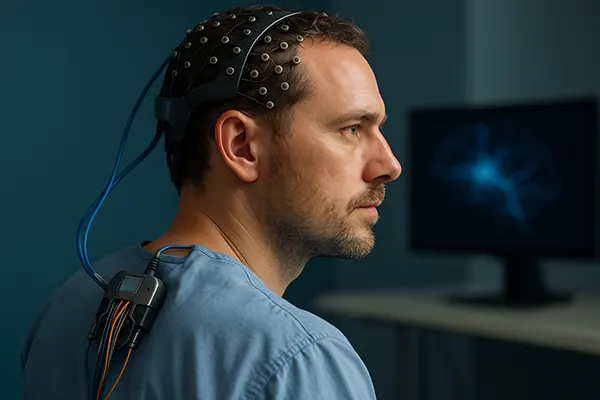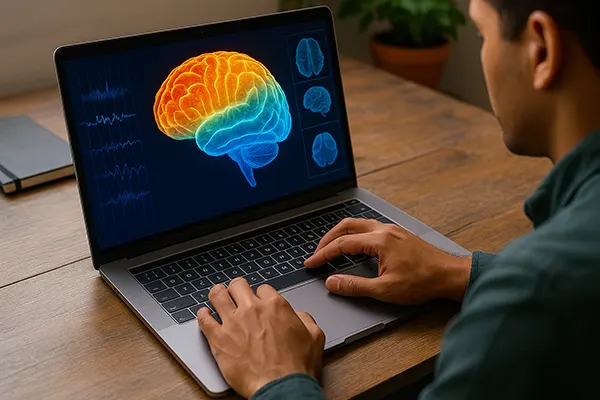
Next-Generation Neural Interfaces: From Treating Paralysis to AI Integration
Neural interfaces are rapidly moving from science fiction into real-world medical and technological applications. Once developed mainly for medical rehabilitation, these brain-computer systems are now evolving to interact with artificial intelligence, potentially expanding human abilities far beyond current limits.
Medical Applications of Neural Interfaces
One of the most groundbreaking uses of neural interfaces today lies in the treatment of paralysis. Brain-computer technologies enable patients with spinal cord injuries or neurodegenerative conditions to regain partial movement and communication. Clinical trials have already demonstrated how electrodes implanted in the brain can translate neural activity into digital signals, allowing individuals to control robotic arms or type text on screens.
Startups and research institutions are working intensively to refine these solutions. Companies such as Neuralink, Synchron, and Precision Neuroscience are competing to develop minimally invasive devices that can be safely used for long-term applications. Their primary objective is to help restore essential daily functions, such as walking, grasping objects, or communicating independently, thus improving patients’ quality of life.
Beyond physical rehabilitation, neural technologies are also advancing in the treatment of neurological disorders. For instance, brain stimulation is being tested as a therapy for conditions like Parkinson’s disease and epilepsy. These clinical applications show the transformative medical potential of neural interfaces.
The Road Towards Accessibility
Despite impressive progress, accessibility remains a challenge. Current procedures require expensive equipment, complex surgeries, and highly specialised teams. To make these technologies widely available, researchers are focusing on non-invasive or minimally invasive devices that can deliver similar performance without risky operations. For example, companies are developing stentrodes—tiny electrode arrays delivered through blood vessels rather than open-brain surgery.
Reducing costs and simplifying surgical procedures are key factors in accelerating adoption. Once these hurdles are overcome, neural interfaces could become a mainstream medical tool, available in hospitals worldwide. This would open opportunities for millions of patients currently excluded due to cost or medical risks.
Equally important is long-term safety. Continuous monitoring and strict regulation are essential to ensure that implanted devices do not cause harm over time. Collaboration between engineers, doctors, and regulators will define how quickly these technologies reach everyday healthcare.
Integration with Artificial Intelligence
The next stage in neural interface development is direct integration with artificial intelligence. While today’s devices are mostly focused on restoring lost functions, future systems may enhance human cognition, memory, and decision-making by working in tandem with AI models. This concept is no longer theoretical: experimental projects are already testing brain-to-AI communication pathways.
For example, researchers are developing algorithms that can interpret brain signals faster and more accurately using machine learning. This dramatically improves the precision of prosthetic control and opens doors for more advanced applications such as real-time language translation directly from thought patterns. The combination of AI and neural interfaces could create a seamless exchange of information between humans and machines.
Such advancements raise profound questions about the nature of intelligence and identity. If a neural implant can give someone instant access to knowledge, improve memory, or even enhance creativity, the boundaries between human cognition and artificial intelligence will become blurred. This is why ethical discussions are advancing alongside technological innovation.
Ethical and Social Considerations
The integration of AI into the human brain presents ethical dilemmas that go beyond medicine. Who will have access to these technologies? Could cognitive enhancements create new forms of inequality? These are pressing issues, as societies must decide how to regulate neuro-enhancement before it becomes widespread.
Another concern relates to privacy. Brain data is deeply personal, and its misuse could lead to unprecedented risks. Safeguarding neural data from surveillance or exploitation will be a central challenge for governments, companies, and individuals. Transparent policies and strict cybersecurity measures will be critical to building public trust.
Finally, questions of autonomy and free will must be addressed. If AI systems influence human decisions directly through neural connections, society will need strong ethical frameworks to preserve personal agency. Balancing the benefits of augmentation with the protection of human rights will be one of the greatest challenges of the coming decades.

Future Outlook
By 2025, neural interfaces are no longer experimental novelties but emerging technologies with real-world impact. Clinical successes in restoring motor functions demonstrate that brain-computer systems can transform healthcare, while early experiments with AI integration hint at a future where human cognition may be expanded beyond natural limits.
However, for these technologies to mature, they must overcome hurdles in safety, accessibility, and regulation. The pace of progress suggests that in the next decade, non-invasive neural devices will become widely available, not just for medical treatment but potentially for education, work, and entertainment.
Ultimately, the evolution of neural interfaces could redefine what it means to be human in the digital age. As medicine, technology, and ethics converge, the decisions made today will shape the future of human-machine symbiosis and the next chapter of our shared evolution.
The Role of Global Collaboration
To achieve this future responsibly, international cooperation is essential. Governments, universities, and private companies must collaborate to establish standards that guarantee both innovation and safety. Cross-border research programmes can accelerate development while ensuring ethical consistency worldwide.
Equally important is public engagement. Societies need to understand how neural technologies work and what implications they carry. Clear communication will help reduce misconceptions and allow people to make informed decisions about their adoption.
In the coming years, the success of neural interfaces will depend not only on technological breakthroughs but also on the ability of humanity to build frameworks that ensure fairness, transparency, and trust. Only through collective effort will these tools fulfil their promise of improving lives while respecting human dignity.